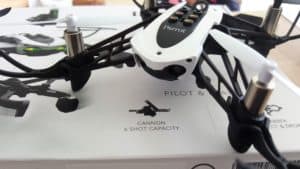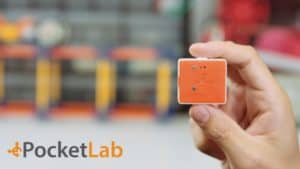Unveiling the Power of Digital Twin Technology in Warehousing: A Comprehensive Guide
In the dynamic realm of the Internet of Things (IoT) and Industry 4.0, Digital Twin Technology emerges as a transformative force, revolutionizing how we perceive and manage physical systems. But what exactly is Digital Twin Technology, and how does it reshape the landscape of warehouse management? Let’s dive into the depths of this technological marvel and explore its applications, benefits, and the tools that make it all possible.
Understanding Digital Twin Technology
Digital Twin Technology is the creation of a virtual replica of a physical system, harnessing data from sensors and various sources. This virtual model mirrors the real-world system, offering real-time insights into its functioning, performance, and areas for improvement. This concept finds broad applications across industries such as manufacturing, transportation, healthcare, and energy.
In the context of warehouse management, a Digital Twin can be a game-changer. It enables organizations to analyze, optimize, and enhance the accuracy and efficiency of their operations, providing a holistic view of the physical warehouse.
Leveraging Sketchup and Power BI for Digital Twins
To bring the concept of a Digital Twin to life, tools like Sketchup and Microsoft Power BI play crucial roles. Sketchup, a robust 3D modeling software, allows the creation of visual representations of the physical warehouse. When integrated with data, it forms the digital twin, offering insights not possible with traditional 2D representations.
On the other hand, Power BI, a business intelligence and data visualization tool, takes the data collected from the physical warehouse and transforms it into real-time insights. Its powerful visualization tools reveal trends, patterns, and essential information about warehouse operations, providing a comprehensive understanding.
Unveiling the Benefits of Digital Twin Technology in Warehousing
1. Improved Accuracy
Digital Twin Technology offers a virtual window into the warehouse’s operations, facilitating a nuanced understanding. This enhanced visibility makes it easier to pinpoint areas for improvement, empowering organizations to make informed decisions to optimize their operations.
2. Enhanced Visualization
Integration with data visualization tools, such as Power BI, enables organizations to interpret data creatively. This multi-dimensional visualization aids in identifying trends, patterns, and crucial information, empowering the operations team to optimize resources and boost efficiency.
3. Increased Efficiency
Monitoring the flow of goods and materials becomes seamless with Digital Twin Technology. Identifying bottlenecks and inefficiencies allows companies to take proactive measures, optimizing warehouse operations for heightened performance and increased profitability.
4. Increased Agility
The ability to simulate different scenarios with Digital Twin Technology provides valuable insights. This agility helps organizations respond swiftly to changing circumstances, maintaining competitiveness in a dynamic marketplace.
A Glimpse into a Proof of Concept
A concrete example of this technological marvel is evident in a proof of concept utilizing Sketchup, WarehouseBlueprint, and Microsoft Power BI. The 3D model created in Sketchup, coupled with Power BI’s ability to link inventory data to individual storage locations, showcases the potential of Digital Twin Technology in warehouse management. The versatility of data sources, including Excel spreadsheets, CSV files, or SQL servers, makes this concept adaptable to diverse organizational needs.
In conclusion, Digital Twin Technology stands at the forefront of innovation in warehouse management. Its ability to enhance accuracy, visualization, efficiency, and agility positions it as a formidable tool for organizations aiming to stay ahead in the ever-evolving landscape of logistics and operations. As technology continues to advance, embracing Digital Twin Technology becomes not just a choice but a strategic imperative for businesses aspiring to thrive in the digital age.
Conclusion
In conclusion, the symbiotic relationship between digital twin technology, Sketchup, and Power BI lays the foundation for a prosperous future in warehouse management. The ability to make data-driven decisions, coupled with the agility to adapt to evolving scenarios, positions organizations at the forefront of innovation.
As we journey into this future, embracing advanced technologies and techniques becomes imperative. The tools at our disposal are not just instruments; they are catalysts for positive change. The fusion of digital twin technology, Sketchup, and Power BI promises not only enhanced warehouse performance but also a strategic advantage in a competitive landscape.
The future is now, and it is exciting. The transformation of warehouse design and optimization beckons, and organizations that embrace this wave of innovation are poised to ride the tide of increased profitability and heightened competitiveness.




